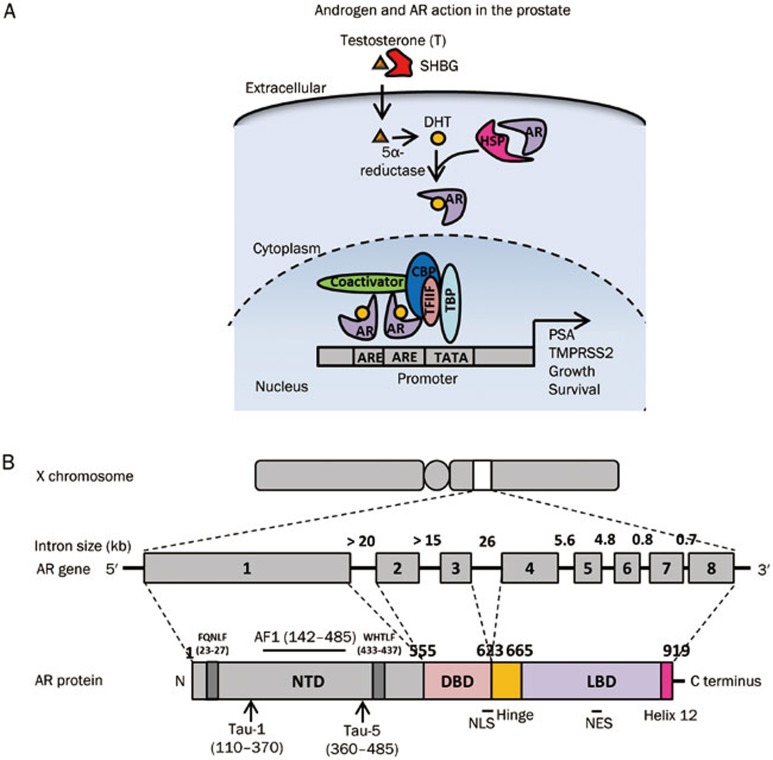Figure 1.
Androgen and AR action. Genome organization of the human androgen receptor gene and the functional domain structure of the androgen receptor protein. (A) Androgen and AR signaling in prostate cells. After testicular synthesis, testosterone is transported to target tissues such as the prostate and becomes converted to dihydrotestosterone (DHT) by 5-α-reductase. DHT binds to the ligand-binding pocket and promotes the dissociation of heat-shock proteins (HSPs) from the AR. The AR then translocates into the nucleus, dimerizes and binds to the androgen response element (ARE) in the promoter region of target genes such as prostate-specific antigen (PSA) and TMPRSS2. At the promoter, the AR is able to recruit members of the basal transcription machinery [such as TATA-box-binding protein (TBP) and transcription factor IIF (TFIIF)] in addition to other coregulators such as members of the p160 family of coactivators and cAMP-response element-binding protein (CREB)-binding protein (CBP). SHBG: serum sex hormone-binding globulin. (B) The androgen receptor gene has been mapped to the long arm of the X-chromosome (locus: Xq11-q12). It contains eight exons interrupted by introns of varying lengths (0.7–2.6 kb) and codes for a protein of 919 amino acids consisting of several functional domains (N-terminal domain (NTD), DNA binding domain (DBD) and ligand binding domain (LBD); amino acid residue numbers are indicated above the AR protein domain map). Exon 1 codes for the NTD, exons 2 and 3 encode the DBD, and exons 4 to 8 encode both the hinge and LBD.

